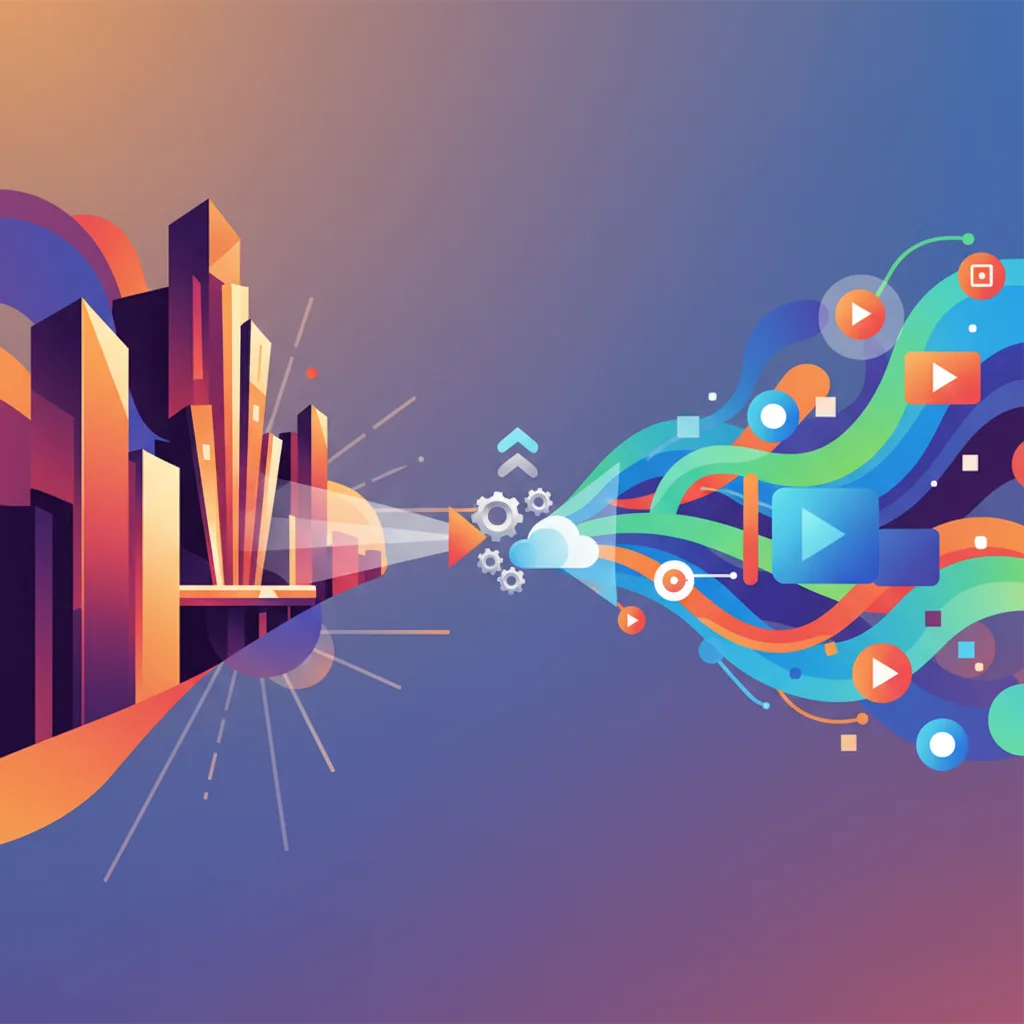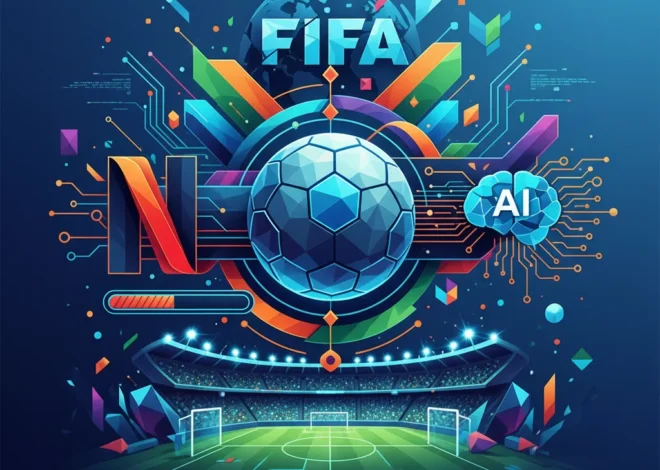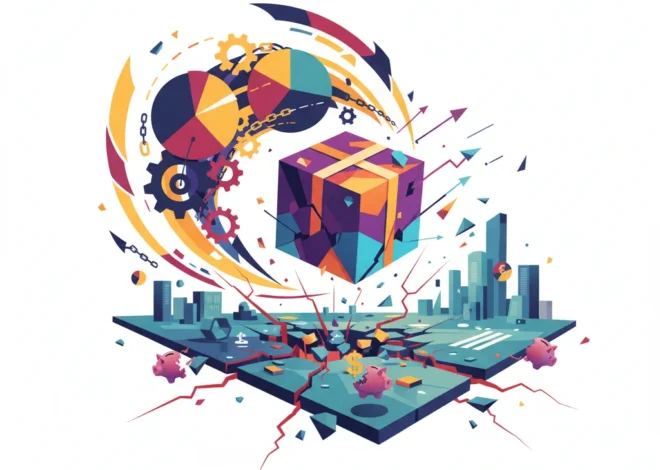
The Cinema vs. Streaming Showdown: Why Your SaaS Startup Should Be Watching
In a world where every industry feels the seismic shifts of digital disruption, you’d expect the CEO of a major cinema chain to be worried. With streaming giants like Netflix, Disney+, and Amazon Prime Video piping endless content directly into our living rooms, the traditional movie theater can feel like a relic from a bygone era. Yet, in a refreshingly bold interview with the BBC, Vue cinema’s boss Tim Richards made a statement that should make every entrepreneur, developer, and tech leader sit up and take notice: he doesn’t see streaming as the competition.
At first glance, this sounds like classic corporate denial—the kind of talk you might have heard from Blockbuster executives in the late 90s. But dig a little deeper, and Richards’ perspective reveals a masterclass in business strategy, user experience, and market positioning that holds powerful lessons for the tech world, from fledgling startups to established SaaS giants.
He argues that cinema and streaming are not battling for the same prize. “It’s a night out,” Richards explained. “It is a two, three, four-hour experience. And it’s a social experience.” In essence, they are solving different problems for the consumer. This isn’t just about watching a movie; it’s about the fundamental “job” each service is hired to do.
The “Jobs to be Done” Theory: Are You Selling a Product or an Experience?
Clayton Christensen’s “Jobs to be Done” (JTBD) framework is a cornerstone of modern product development and innovation. It posits that customers don’t buy products; they “hire” them to do a “job.” A milkshake isn’t just a sweet drink; it’s hired to make a long, boring commute more interesting. A streaming service isn’t just a content library; it’s hired to kill boredom, provide a convenient weeknight distraction, or babysit the kids for an hour.
From this perspective, Tim Richards’ argument is crystal clear. The “job” of a cinema is to provide a premium, immersive, and social event. It’s a date night, a family outing, a shared cultural moment. The giant screen, the booming sound, the collective gasps and laughter of an audience—these are not features; they are the core components of the experience you’re hiring. You can’t replicate that on a 65-inch TV with a soundbar, no matter how good your setup is.
Streaming, on the other hand, is hired for a different job entirely: ultimate convenience and infinite choice. It’s about having a vast library at your fingertips, ready to be consumed on any device, anywhere, anytime. It’s a fundamentally different value proposition built on a different technological and business model.
For tech professionals, this is a crucial distinction. Are you building software that simply performs a function, or are you designing an experience that fulfills a deeper human need? Many startups fail because they build a technologically superior product that nobody “hires” because it doesn’t do a meaningful job better than the alternatives.
The AI Glitch That Saw a Gun: Why a Teen's Doritos Snack Is a Wake-Up Call for All of Tech
Deconstructing the Platforms: A Tale of Two Tech Stacks
Let’s analyze cinema and streaming as if they were competing tech platforms. One is a hardware-centric, experience-driven platform, and the other is a software-centric, data-driven platform.
The cinema is a highly specialized piece of hardware. The building, the projection systems, the Dolby Atmos sound, and the reclining leather seats are all part of an integrated “stack” designed for one purpose: maximum immersion. The innovation here isn’t just in the movie itself but in the delivery mechanism. This is where modern technology plays a huge, often invisible, role:
- Cloud-Based Logistics: Digital film prints (Digital Cinema Packages) are massive files. Their distribution to thousands of screens worldwide is a complex logistical operation managed via secure cloud infrastructure.
- SaaS for Operations: Modern cinemas run on sophisticated SaaS platforms that handle everything from ticketing and dynamic pricing to concession inventory and staff scheduling. This is the central nervous system of the business.
- Automation: From automated ticket kiosks to robotic cleaning crews and highly automated projection booths, automation is key to running a modern multiplex efficiently and consistently.
- Cybersecurity: Protecting the digital content from piracy before its release date is a massive cybersecurity challenge. Similarly, securing millions of customer transactions and personal data stored in their systems is a top priority, requiring robust security protocols.
Streaming services, by contrast, are pure software and data platforms. Their “hardware” is the commodity consumer electronics in our homes. Their entire focus is on the user interface, content delivery, and personalization at scale.
- AI and Machine Learning: The recommendation engine is the secret sauce. Netflix’s use of machine learning to analyze viewing habits and predict what you’ll want to watch next is legendary. This level of personalization is something a cinema, with its one-to-many broadcast model, can’t replicate.
- Global Cloud Infrastructure: The ability to stream 4K content to millions of users simultaneously is an incredible feat of engineering, built on a massive, distributed cloud network like AWS.
- Programming and A/B Testing: Every aspect of the user interface is meticulously tested and optimized through continuous programming updates. They use data to decide everything from the thumbnail art for a show to the layout of the home screen.
Below is a comparison of these two distinct platform models:
| Feature | The Cinema Platform | The Streaming Platform |
|---|---|---|
| Core “Job” | Immersive, social, event-based entertainment | Convenient, on-demand, personalized content |
| Primary Technology | Specialized hardware (screens, sound), operational SaaS | Software, AI/ML algorithms, global cloud infrastructure |
| Business Model | Pay-per-experience (ticket + concessions) | Subscription-as-a-Service (SaaS) |
| Key Innovation Driver | Enhancing the physical experience (IMAX, 4DX, luxury seating) | Data-driven personalization, UI/UX optimization |
| Social Context | Communal, shared, public experience | Individual, private, or small group experience |
Lessons for Every Tech Entrepreneur and Developer
So, why does a cinema boss’s view on his industry matter to someone building a B2B SaaS product or a new mobile app? Because the underlying principles of strategy, competition, and value creation are universal.
1. Define Your Battlefield Correctly.
Richards isn’t fighting streaming head-on because he knows it’s a battle he would lose. He’s not competing on convenience or library size. Instead, he has defined his battlefield as the “premium night out.” As a startup, are you trying to out-feature a market leader like Microsoft or Google? That’s a losing game. Instead, find a different “job” to do. Focus on a niche audience, a superior user experience, or a different business model. Don’t compete; differentiate.
2. Your Experience is Your Moat.
In a world of copycat software and feature parity, the user experience is one of the few sustainable competitive advantages. Vue’s moat is the tangible, emotional experience of being in a theater. For a software company, your moat is a seamless onboarding process, intuitive design, stellar customer support, and a product that makes users feel powerful and efficient. According to a study by Forrester, a well-designed UI could raise your website’s conversion rate by up to 200%, and a better UX design could yield conversion rates of up to 400%. This is where dedicated programming and thoughtful design create real business value.
Beyond the Ticker: 3 Unlikely Case Studies on Tech Innovation & Market Trends
3. Use Technology to Enhance, Not Just Exist.
Vue uses cloud, SaaS, and automation not as customer-facing features, but to perfect the delivery of its core experience. The best technology is invisible; it just works. When building your product, resist the temptation to cram in every new piece of tech like artificial intelligence just for the sake of it. Instead, ask: “How can this technology make our core value proposition stronger, faster, or more delightful for the user?” Use AI to provide smarter insights, not just a flashy chatbot. Use automation to remove friction, not to replace human connection where it matters.
4. Understand the Power of Scarcity and Eventization.
Part of the magic of cinema is its ephemeral nature. A film is “in theaters now” for a limited time, creating urgency and a sense of occasion. Streaming is a model of abundance. Both are valid. For startups, this is a lesson in marketing and product launches. Can you “eventize” a new feature release? Can you create exclusive, time-bound offers or webinars that generate buzz in a way that an “always-on” model can’t? The success of the “Barbenheimer” phenomenon, which drove massive audiences to theaters, was a perfect example of cultural eventization that streaming struggles to replicate (source).
Your Snack Could Get You Arrested: When AI-Powered Security Goes Terribly Wrong
The Final Cut: A Lesson in Enduring Value
Tim Richards’ perspective is a powerful reminder that technology doesn’t automatically kill old business models; it forces them to evolve and focus on their unique strengths. The cinema has survived the invention of television, VCRs, DVDs, and now streaming, not by fighting technology, but by doubling down on what it does best: providing a powerful, shared human experience.
The next time you’re architecting a cloud solution, debugging a line of code, or pitching your startup to investors, think about the Vue cinema. Are you just selling a convenient tool, or are you creating an unforgettable experience? In the long run, businesses that understand the “job” they are truly being hired for are the ones that will not only survive disruption but thrive on it.


